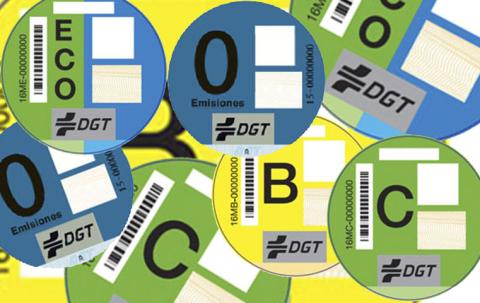Digital technologies that allow vehicles to “talk” to each other and to infrastructure found on roads such as traffic lights or panels (Cooperative Intelligent Transport Systems or C-ITS) are key to moving towards a smart road transport sector.
C-ROADS is one of major European projects related to intelligent transport systems, which our country recently joined, to launch related initiatives.
The main objectives of the C-ROADS project are that the new technologies implemented with ITS, v2v (vehicle to vehicle) and v2i (vehicle to infrastructure), are responsible for making our circulation safer and reliable by eliminating, as far as possible, human error.
We tell you what exactly this project is, how it will be carried out and how it has been developed in Spain, in this report.
What is the C-ROADS platform?
C-ROADS or connected walkway platform is a The initiative was born from the cooperation of several European Member States and road operators, in order to implement C-ITS services on the road.
It was created in 2016 to help deploy this service in Europe in a more coordinated approach. between different countries. It currently has 17 of them participating (Germany, Austria, Belgium, Czech Republic, Denmark, Slovenia, Spain, Finland, France, Hungary, Italy, Norway, Netherlands, Portugal, United Kingdom and Sweden).
What do we understand by C-ITS?
Cooperative Intelligent Transportation System (C-ITS) They allow vehicles to communicate with other vehicles, with traffic lights and with the rest of the road infrastructure, whatever it may be.
With alerts generated from the large amount of information that we will have through the application or that we will receive on our vehicles, this system has great potential to improve road safety and road transport efficiency.
For example, information about the traffic jam ahead or about the optimal speed for taking the green light can be shown to the driver in the vehicle in a timely manner.
Each country’s C-ROADS project will install C-ITS equipment in various places in the EU, with pilot plans designed to test solutions in different environments, for example, on highways and urban areas.
C-ITS cooperation system elements and technology
The basic elements in implementing C-ITS are the technology used on the road, vehicle-mounted devices, and the management center which receives the information and, with the support of the computer, will process it to provide different services to the user.
As we already mentioned, the basic elements are:
OBU: This is a vehicle-mounted unit that is responsible for receiving and sending cooperation messages to other vehicles or to the infrastructure. For example, if the vehicle applies emergency braking, the system sends messages to vehicles following you.
MSW: this system refers to the infrastructure, it is the unit installed in it. The Roadside Unit is tasked with sending cooperative information to vehicles regarding the area they are in, and receiving information from vehicles.
This usually installed in traffic lightsto cover a larger area or on panels on the street.
C-ITS Center: globally we have the center that controls everything. We face a virtual platform that manages and monitors the entire C-ITS ecosystem: vehicles, infrastructure and all the information related to the provision of these services.
An important aspect for proper service implementation is cybersecurity. Both the device (RSU and OBU) and the message sent must be protected, certified and encrypted to avoid security issues
Main objective of the project
The main objectives of this project are improve road safety, protect health and people, reduce accidents and improve traffic flow.
Another big goal, already on a grand scale, is test innovative traffic technologyused traffic simulation software to provide virtual twins, which we discussed in another report, which helps understand the impact of large-scale deployment of C-ITS services across all types of scenarios.
Harmonization of C-ITS implementation throughout Europe
C-ROADS partners will work closely with each other to identify common specifications (communication, security, etc.) to ensure cross-border interoperability and harmonization of C-ITS services.
This spread it’s an evolutionary process that will start with a less difficult use case like the so-called first day servicewhich includes messages about traffic jams, dangerous places, construction sites, and slow or stationary vehicles, as well as weather information and speed tips to keep traffic flowing.
All C-ITS services will be transmitted directly to the vehicle so users are informed, but not distracted, to control the road situation in the event of a problem.
Spanish C-ROADS Project
As part of project implementation C-ROADS Spainfrom 2017 to 2021, when the trial has ended, has switched to creation of five projects with specific goals: Galicia, Madrid, the coast of Cantabria and the Mediterranean and the DGT 3.0 project, which covers the whole of Spain.
In all these pilot projects, warning services are tested for drivers about possible risks that can be found on the road, such as work, stopped vehicles, bad weather conditions, etc. to assess whether they are really effective.
The pilots to be carried out are:
DGT 3.0 Pilot: In this trial at the national level, the implementation of C-ITS services was analyzed through the platform Internet of Things (IoT)enabling the interconnection of all actors involved in the traffic and mobility ecosystem.
The so-called zero vision is sought, which seeks to prevent no death on the way.
For implementation, The Directorate General of Traffic (DGT) created a free application called Comobitywhich allows road users to know the distance between each other and the place they are about to pass, so they can be more careful.
Madrid pilots: it is located on the M30, with a length of about 32 km. This includes a solution to inform users of car parking in the city and a management system capable of linking to various information sources to process it and which is available to application users.
Mediterranean Pilots: It traverses the Mediterranean Corridor on various sections of the AP-7 motorway, with the primary objective of verifying C-ITS services on expressways and finding road-related incidents that generate landslides of meteorological causes.
Cantabrian pilots: The project is located mainly along the A-8 / E-70 highway connecting the provinces in the north of Spain (Galicia, Asturias, Cantabria and the Basque Country). Tests were carried out with regard to the risk of collisions on mountain roads.
SISCOGA Pilot Extended: The pilot was developed on 130 kilometers of intercity roads and 30 km of urban roads, in Pontevedra.
Regarding the conclusions drawn, it is expected that vehicle-to-vehicle communication will be hybrid, on the one hand, via mobile networks and applications and, on the other hand, thanks to short-range Wi-Fi networks.
On the other hand, it is possible to demonstrate, thanks to the large variety of pilots performed, that this technology responds well regardless of the circumstances, location, or infrastructure in which the elements are placed.
Finally it was shown that the interoperability between the different elements (Roadside Unit and On board Unit), even from different manufacturers, is very solid.
These pilots are expected to continue and more will gradually be added.
The implementation of C-ITS faces many important unresolved issues, such as legal, organizational, administrative, governance, technical and standardization aspects, as well as implementation and acquisition.
However, the result is very positive for nowso we hope that everyone, not only at the state level, but also when we travel outside our borders, can enjoy all this information.

“Entrepreneur. Internet fanatic. Certified zombie scholar. Friendly troublemaker. Bacon expert.”








